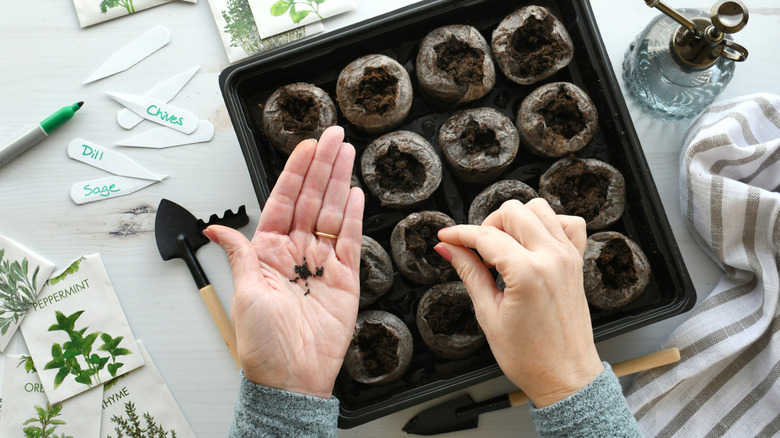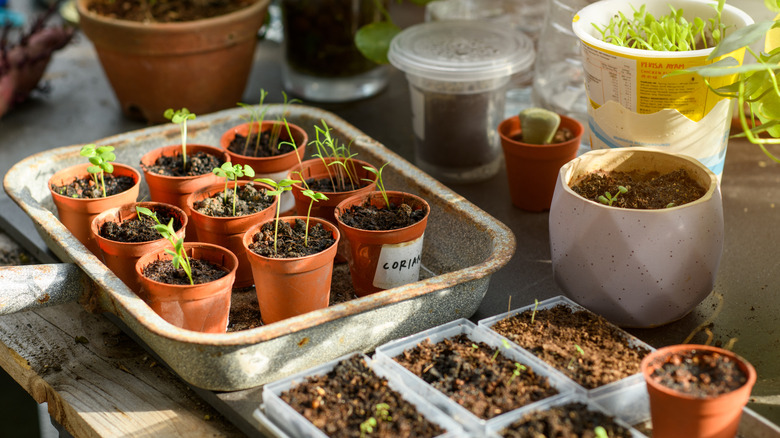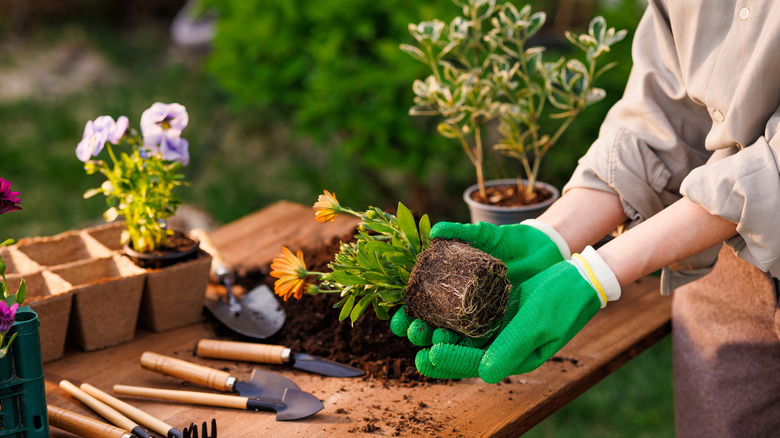What's The Best Soil For Starting Flower Seeds (And Ingredients To Look For)
We may receive a commission on purchases made from links.
There are plenty of reasons to plant your flower seeds indoors. Not only will you be able to get started on your garden ahead of schedule, but you'll have a chance to grow a wider variety of plants — the exact species you like — and your money will go much further. Common garden flowers like cosmos, zinnias, and marigolds are all easy to start indoors. But growing healthy plants from seeds isn't always as simple as it seems. If you're looking for the best way to start seeds indoors, it all begins with the soil.
Seed starting mix and potting soil are not the same. The best mix for tiny seeds and their tender roots has lighter, finer medium; they don't need lots of nutrients in the medium to germinate. As your plants grow, however, nutrients will become important. So, the first decision you must make is whether to go with a soilless medium and transplant the seedlings into soil; or choose a soil mix designed to keep seedlings growing beyond germination. Either option will include an ingredient for moisture retention, such as coconut coir, and something to provide aeration, like perlite. And if you go with a medium that contains soil, you will want to look for nutrients to feed your growing plants.
Soilless seed starting mixes
When it comes to giving your flower seedlings the best start in life, many gardeners swear by sterile seed starting mixes. That's because they do not contain microbes that could attack your flower seeds just as they germinate. For decades, peat moss has been a staple for seed-starting gardeners (although some argue that should not use peat moss in your garden). While peat moss is still widely used in the U.S., coconut coir is becoming a popular option and it does a great job of holding onto the valuable moisture seeds need to germinate.
To ensure your seed starting mix is light enough to allow new roots to grow, look for ingredients such as perlite, which aerates soil and allows light to filter through to the seeds to aid in germination. Alternatively, vermiculite may be a better choice if your flower seeds need more moisture in the medium. Vermiculite also has the added benefit of preventing fungal diseases. Look for something like Happy Trees Coco Coir and Perlite 70/30 Growing Medium, in which the coir is triple washed to reduce the salt content of the mix. To DIY your own soilless mix, combine one part coir, one part perlite, and one part vermiculite. If you opt for this less nutrient-rich seed-starting medium, transplant, or start fertilizing, once you see about six true leaves.
Seed starting soil mixtures
If you are not keen to start transplanting your seedlings while they are still tiny and tender, you will want to opt for a seed-starting soil mixture with a neutral pH — that's pH of 6.0 to 7.0. You can look for the same ingredients we have already talked about, namely coir and perlite, as these can help your garden at every stage. However, there are a few more things to look for in these bags.
To give your flowers a little more time to grow in their original pots, they will need some help. Look for mycorrhizae to promote growth. You will often see it in the ingredients list of seed-starting mixes, along with worm castings, kelp, and compost — all perfect for giving growing plants a boost. Worm castings and seaweed-based fertilizers are easier on young, flowering plants. Some seed-starting soils are starting to incorporate biochar, which seems to improve germination rates and boost root growth. Coast of Maine Sprout Island Blend or Espoma Organic Seed Starter can be good, easy-to-find options. To make your own, use the same mix of coir and perlite as above, but add in compost to make the medium more nutrient rich and give your blooms a good start. Adding worm castings is also an easy way to add fertilizer without worrying about burning the roots.


